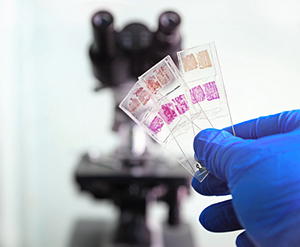An artificial intelligence (AI) model for automated classification of colorectal polyps could benefit cancer screening programs by improving efficiency, reproducibility, and accuracy, as well as reducing access barriers to pathology services. In a new study published by Wei et al in JAMA Network Open, researchers reported that their model could distinguish the four major types of colorectal polyps at the level of practicing pathologists, as evaluated on a dataset across multiple external institutions. They also proved that a model based on data from a single institution may achieve high accuracy on outside data.

Photo credit: Getty
The team found that a deep neural network, trained on colorectal polyp data from Dartmouth-Hitchcock Medical Center, still performed with the same level of sensitivity and accuracy as practicing pathologists when used on 238 slides spanning 24 different institutions in the United States.
Methods and Outcome Measures
The model was built by first using 326 slides from Dartmouth-Hitchock for training, 157 slides for an internal data set, and 25 for a validation set. For the external data set, 238 slides for 179 distinct patients were obtained from 24 institutions across 13 states.
The main outcomes and measures of the study were accuracy, sensitivity, and specificity of the model to classify four major colorectal polyp types: tubular adenoma, tubulovillous or villous adenoma, hyperplastic polyp, and sessile serrated adenoma against practicing pathologists.
Results
On internal evaluation, the model had a mean accuracy of 93.5% vs the local pathologists’ accuracy of 91.4%. On the external test set, the model had an accuracy of 87.0% vs the local pathologists’ accuracy of 86.6%.
“Our study is one of the first to show a deep neural network that is generalizable to data from multiple external medical centers,” said senior study author Saeed Hassanpour, PhD. “A challenge in the field of deep learning for medical image analysis is collecting widespread data. Here, we have access to histopathology slides from 24 different institutions, which gave us the opportunity to evaluate and show that the AI models that we train are broadly generalizable to new data from outside.”
Dr. Hassanpour’s team has built a graphical user interface for showing the classifications of the neural network. They are currently working on a clinical trial to evaluate the use of their algorithm for assisting pathologists in diagnosis of colorectal polyps.
“We are hoping to create a software application that can help pathologists improve their accuracy, efficiency, and consistency in diagnosing slides,” he concluded.
Disclosure: For full disclosures of the study authors, visit jamanetwork.com.

